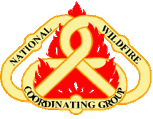| The situations we encountered on the Wallow South can be summed-up in several ways: Poor Decision Making, Poor Leadership and Poor Situational Awareness, Poor Incident management on the part of the Type 2 Incident Management Team (T2) assigned. This period of time was in the early stages of the what was to become the historical Wallow fire. We spoke with management about our concerns and they agreed to post this SAFENET. I having forty years of Wildland Firefighting I have never seen such a lack of support. I have been assigned to Type 1 and Type 2 teams for most of my career and qualified as an ICT1, ICT2, OSC1, SOF1, PSC2 and several aviation and RX qualifications........ Had it not been for the San Carlos Apache Tribe and the San Carlos Agency there would have been NO support on the Wallow South. The Tribe and the Agency need to be commended for their efforts. 1. The crews on the line had little or no direct interface with T2 team members. 2. This lack of communications went on for nearly 10 days, including but not limited lack of face-to-face briefing and written Incident action plans (IAPs). 3. Briefings that were conducted over the radio were chaos, and all the support from this team was confusing and not specific which did not focus on the NUMBER 1 priority (fire fighter safety). 4. The team focused on higher priorities in the north end of the fire and really left the Tribe and Agency hanging to make strategy and tactics without Incident management direction. 5. As mentioned, the Tribe and Agency did a commendable job taking care of strategy and tactics, the biggest concern was the lack of ALL logistical support, food, water, vehicle fuel, spike camps facilities, traffic plans. 6. Crews were commuting 3 hours every day to and from ICP to the fire (6 hours per day). 7. T2 team was overwhelmed and in a complete state of confusion which lead to chaos and mostly compromised our Number 1 priority, FIREFIGHTER SAFETY. 8. This continued through the T2 teams tour of 14 days.......WHY?... Things did settle down, but only after the Type 1 Incident Management team transitioned. |



